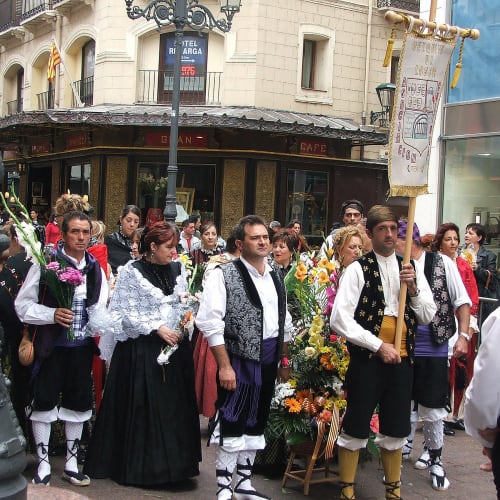Three Kings Sale - Up to 40% Off! Shop Sale
Aragón: Compelling Natural Beauty in the Pyrenees
by Don Harris | January 2010




Ferdinand of Aragón married Isabel of Castile to create modern Spain, and the echoes of his kingdom are apparent to this day. Modern Aragón borders France in the north, Catalonia and Valencia in the east, Castile-La Mancha in the south, and Castile and Leon, La Rioja and historic Navarre in the west.
The compelling beauty of the region is amazing. We find Aragón to be a fabulous place to get lost in the best of the Pyrenees, while visiting a variety of villages and cities, which have been shielded from the erosion of modern times. Because of its unique geographic position as a crossroads, members of our family have often passed through mountains and their valleys where, in their remoteness, local cultures survive.

Two remote stone towns in Aragón are among our favorites. A few years ago, we decided to investigate the roads heading west from the Mediterranean coast north of Valencia and Castellón de la Plana. As we drove deeper into the rugged and remote Maestrazgo region, we were astonished to see the dramatic walled city of Morella perched on a rock 3,000 feet high. Once, as we walked (or is climbed the better word?) the steep city streets which lead ultimately to the cathedral, we had to duck into the rock-bound doorway of a sweets shop to dodge a small river of swirling water caused by a short cloud burst. The downpour had created a small river that gushed down the street. No need for a street sweeper here!
Sos del Rey Católico is another dramatic village hidden in the rugged mountains of Aragón. It is made completely of stone and has an uncanny medieval flair. When we walked the streets, we felt we were in another century – it was a solid and peaceful experience. Not far away was the timeless San Juan de la Peña – a small monastery carved out of stone in the 10th century, whose cave contained a pantheon of early kings and nobles of Aragón. It was one of the first sites we visited when we began investigating Spain many years ago, and remains a favorite.
We enjoy seeing the many vestiges of Muslim rule, which lasted into the 12th century. Aragón, was the northernmost reach of the Muslim caliphate of Al Andalúz. The city of Teruel has a dramatic setting. Her architecture has many horseshoe arches and beautiful tile inlays, including those in the Mudéjar ceiling of the cathedral and in many of the roofs and towers of the city.
Perhaps the most memorable visit of all was when visited Zaragoza during the festivities surrounding Nuestra Señora de Pilar, which coincides with Día de la Hispanidad, 12 October. It is a combined religious and civic holiday marking the cultural triumph of Spain. Usually members of the royal family are there along with church dignitaries.
We saw hundreds of people coming from the neighboring villages, and, to some extent all of Spain, dancing in traditional dress and carrying huge bouquets to lay at the feet of the Virgin. As you can imagine the offerings soon turned into a mountain of blooms -- several feet high.
Aragón has inherited its rich gastronomy from the different cultures that have passed through the region over the centuries. We enjoy its focus on its local products, which creates a simple, honest cuisine; especially noteworthy are rich and flavorful stews or cocidos. We also savor the way they prepare their slow roasted lamb and grilled lamb chops.
Because of the fertile Ebro River basin, it is a treat to visit the local markets and see the gorgeous pears, apples, cherries, and plums. The local empeltre olives are genuine black olives with a tang – unlike the bland processed black olives with which you may be familiar. Some of the finest arbequina olive oils come from Aragón as well.
Related Articles

